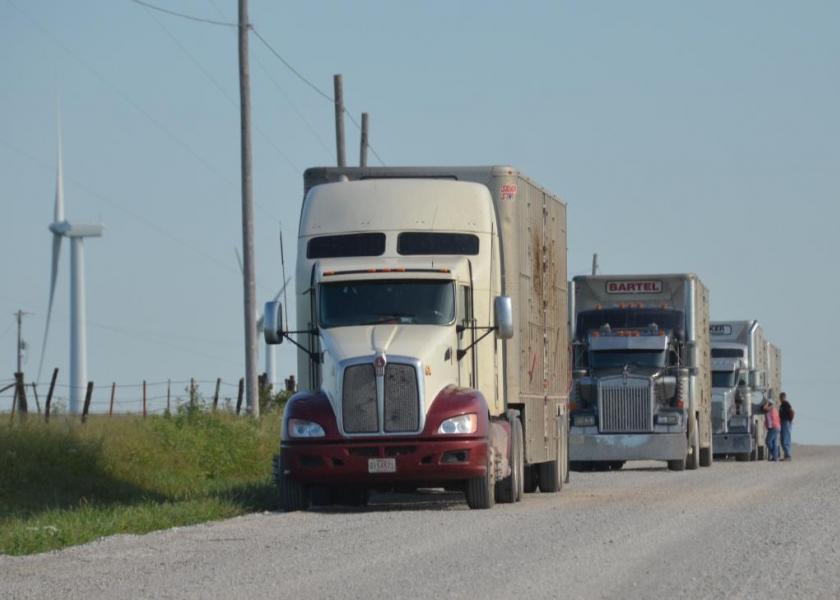Study Looks at Livestock Trailer Contamination to Barns

Source: Paul Sundberg, Swine Health Information Center
The Swine Health Information Center (SHIC) funded a pilot study to determine if a fluorescent powder could be used to study the transfer of contamination from livestock trailers to barns during marketing events. Conducted by staff from Iowa State University (ISU) in collaboration with Iowa Select Farms, the study addresses concerns that livestock trailers are frequently contaminated with porcine reproductive and respiratory syndrome virus (PRRSV), porcine epidemic diarrhea virus (PEDV), and other pathogens at swine slaughter plants in the U.S. Results of this pilot study demonstrated fluorescent powder can be used to track contamination between livestock trailers and barns, offering a needed tool for evaluation and subsequent improvement in transport biosecurity. Complete study results are available on the SHIC website.
In the U.S., barns of pigs are typically marketed over several weeks, creating the opportunity to bring pathogens from the marketplace back to the farm. If pigs become infected, they are subject to production losses, as well as becoming potential sources of virus for other farms. Contaminated trailers might also become carrying agents to other farms and drivers might pass pathogens on their clothing or boots.
During the study, dry woodchips on the floor of the chute appeared to inhibit the transfer of fluorescent powder, a marker for pathogen contamination, on the boots of the load-out crew but as feces and urine began to accumulate on the chute, the inhibition quickly dissipated. With a fluorescent light, investigators were able to document that fluorescent powder was transferred from the trailer to the load-out chute during the loading procedure at all three study sites. Transfer was confirmed by the detection of fluorescent powder on the bottom of workers' boots, on their cutting boards for sorting, in the chute, the load-out alleyway, center alleyway of the barn, and the first three pens adjacent to the load-out alleyway on both sides.
In addition to the named objective of the pilot study, several other observations were made relating to transportation biosecurity. Once pigs were on the trailer, they occasionally lost their footing while lunging forward off their back legs. This propelled significant amounts of wood chips from the livestock trailer onto the chute. On several occasions, pigs already on the trailer managed to return to the chute. Additionally, the line of separation between the livestock trailer and chute was often violated by both the driver and farm worker.
Studies are planned to use fluorescent powder to evaluate multi-zone loading, where members of the loading crew are restricted to specific zones in the barn, chute and load-out area, as an alternative loading strategy with the intent of reducing the likelihood of transferring pathogens from livestock trailers to the center alleyway and pens inside the barn. While this pilot study was conducted on market pigs, the concept can apply to all sizes of pigs and stages of production.
For more information, visit www.swinehealth.org or contact Dr. Paul Sundberg at psundberg@swinehealth.org.
Related Articles:
Transportation Biosecurity: Control What You Can
Biosecurity: Facing the Invisible Enemies







